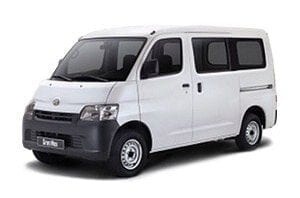
7 misconceptions about turbo cars
Content
- 7 misconceptions about turbo cars:
- Hybrid models not turbo: WRONG
- Turbo motors are not sensitive to air temperature: NOT CORRECT
- Turbocharger only starts at high rpm: WRONG
- Tubular motors are not suitable for all transmissions: SOME TRUE
- All manufacturers offer naturally aspirated models: WRONG
- The resource of the turbo engine is the same as that of the atmospheric one: SOMETHING TRUE
Why does an engine need a turbine? In a standard combustion unit, the cylinders are filled with a mixture of air and fuel due to the vacuum created by the downward movement of the piston. In this case, the filling of the cylinder never exceeds 95% due to resistance. However, how to increase it so that the mixture is fed into the cylinders in order to get more power? Compressed air must be introduced. This is exactly what the turbocharger does.
However, turbocharged engines are more complex than naturally aspirated engines, and this calls into question their reliability. In recent years, there has been a balance between the two types of engines, not because turbocharged engines have become more durable, but because naturally aspirated ones already earn much less than before. However, most people still believe in some myths about turbocharged engines that are not true at all or not at all true.
7 misconceptions about turbo cars:
Do not turn off the turbo engine immediately: SOME TRUTH

No manufacturer prohibits stopping the engine immediately after the end of the trip, even if it was subjected to heavy loads. However, if you have been driving at high speed on a highway or climbing a mountain road with a lot of bends, it is good to let the engine run a little. This will allow the compressor to cool down, otherwise there is a risk of oil entering the shaft seals.
If you have been driving slowly for some time before parking, there is no need for additional compressor cooling.
Hybrid models not turbo: WRONG

Simpler and, accordingly, cheaper hybrid cars are most often equipped with naturally aspirated internal combustion engines operating as economically as possible according to the Atkinson cycle. However, these engines are less powerful, which is why some manufacturers rely on turbochargers powered by an electric motor.
For example, the Mercedes-Benz E300de (W213) uses a turbodiesel, while the BMW 530e uses a 2,0-litre 520i turbocharged petrol engine.
Turbo motors are not sensitive to air temperature: NOT CORRECT

Almost all modern turbocharged engines are equipped with pressurized intercoolers or intercoolers. The air in the compressor heats up, the flow density becomes lower and, accordingly, the filling of the cylinders worsens. Therefore, a coolant is placed in the path of the air flow, which reduces the temperature.
However, in hot weather, the effect is less than in cold weather. It's no coincidence that street racers often put dry ice on the intercooler plates. By the way, in cold and wet weather, atmospheric engines "pull" better, because the density of the mixture is higher and, accordingly, detonation in the cylinders occurs later.
Turbocharger only starts at high rpm: WRONG

The turbocharger starts to run at minimum engine speed and as the speed increases, its performance increases. Due to the small size and lightweight design of the rotor, the inertia of the turbocharger is not so important and it spins quickly to the required speed.
Modern turbines are electronically controlled so that the compressor always operates at optimum performance. This is why the engine is able to deliver maximum torque even at low revs.
Tubular motors are not suitable for all transmissions: SOME TRUE

Many manufacturers claim that their CVT gearboxes are very reliable, but are wary of connecting them to a high-torque diesel engine. However, the life of the belt connecting the engine and transmission is limited.
With gasoline engines, the situation is ambiguous. Most often, Japanese companies rely on a combination of a naturally aspirated gasoline engine, in which the torque peaks at 4000-4500 rpm, and a variator. Obviously, the belt will not handle that kind of torque even at 1500 rpm.
All manufacturers offer naturally aspirated models: WRONG

Many European manufacturers (such as Volvo, Audi, Mercedes-Benz and BMW) no longer produce naturally aspirated vehicles, even in the lower classes. The fact is that the turbo engine offers significantly more power with a small displacement. For example, the engine in the photo, a joint development of Renault and Mercedes-Benz, develops power up to 160 hp. with a volume of 1,33 liters.
However, how do you know if a model has (or doesn't) have a turbo engine? If the number of liters in the displacement, multiplied by 100, is much greater than the number of horsepower, then the engine is not turbocharged. For example, if a 2,0-liter engine has 150 hp. - it's atmospheric.
The resource of the turbo engine is the same as that of the atmospheric one: SOMETHING TRUE

Companies themselves do not have the ability to make "perpetual" motors. Owners who know that their car has a limited lifespan, accordingly, pay less attention to the engine, and after the warranty expires, the car often changes hands. And there it is no longer clear what exactly is happening to him.

